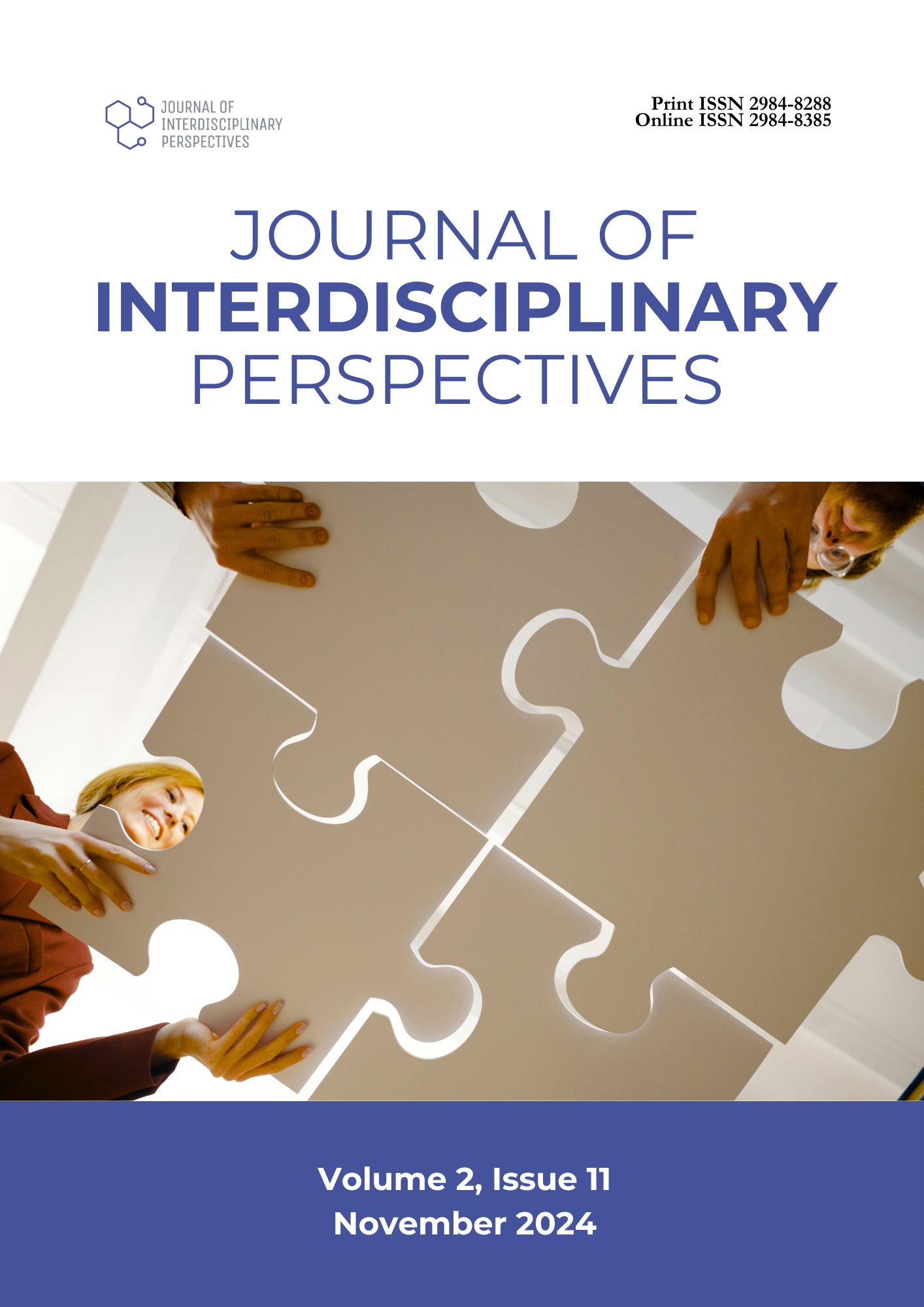Evaluating the Efficacy of Varying Concentrations of Metarhizium anisopliae Against Bactrocera cucurvitae Under In-Vitro Conditions
DOI:
https://doi.org/10.69569/jip.2024.0516Keywords:
Bactrocera cucurbitae, Efficacy, Metarhizium anisopliae, Mortality rates, Pest ManagementAbstract
This study aimed to evaluate the effectiveness of the entomopathogenic fungus Metarhizium anisopliae in controlling the cucurbit fruit fly (Bactrocera cucurbitae) under in-vitro conditions, addressing the need for sustainable alternatives to chemical pesticides. The research focused on developing eco-friendly pest management strategies to mitigate the economic losses caused by B. cucurbitae infestations in squash cultivation. A randomized complete block design (RCBD) was employed, testing five varying concentrations of M. anisopliae spore solution. Each treatment was replicated four times, using 20 fruit flies per replicate. The spore solutions were allocated for each treatment, and mortality rates, mummification times, and toxicity levels were recorded. Statistical analyses, including ANOVA and log-probit analysis, were used to determine lethal concentrations and times for effective control. The results demonstrated a clear dose-response relationship, with higher spore concentrations leading to significantly higher mortality rates and faster mummification times. A concentration of 6.0 × 10⁵ Colony-Forming Unit CFU/mL was necessary for substantial population suppression, with lethal concentrations for 50% and 99% mortality calculated as 2.65 × 10⁵ (CFU)/mL and 1.38 × 10⁵ CFU/mL, respectively. These findings suggest that M. anisopliae is an effective biological control agent against B. cucurbitae, offering a sustainable alternative to chemical pesticides. Further research is recommended to assess its efficacy in field applications and to evaluate potential long-term ecological impacts.
Downloads
References
Alfenas, L. J., Ribeiro, E. P., & Monteiro, A. L. G. (2019). The impact of pesticides on insect resistance in agricultural ecosystems. Pest Management Science, 75(8), 2212-2222. https://doi.org/10.1002/ps.5356
Cai, W., Hu, L., Zhang, M., & Wang, H. (2023). Global spread and management strategies of Bactrocera cucurbitae: A review. Journal of Pest Science, 96(1), 15-32. https://doi.org/10.1007/s10340-022-01498-0
Dimbi, S., Maniania, N. K., & Torto, B. (2003). Influence of the host plant on the efficacy of Metarhizium anisopliae in controlling the cotton bollworm, Helicoverpa armigera. Journal of Applied Entomology, 127(2), 104-110. https://doi.org/10.1046/j.1439-0418.2003.00768.x
Ekesi, S., Lux, S. A., & Mworia, R. (2002). Efficacy of Metarhizium anisopliae against the melon fly, Bactrocera cucurbitae (Coquillett) in Kenya. African Entomology, 10(1), 93-97. https://doi.org/10.4001/003.010.0104
El-Gendy, I. R., Zawrah, M. F., & El-Banobi, M. I. (2022). Virulence effect of Metarhizium anisopliae (Met.) and Beauveria bassiana (Bals.) fungi against the peach fruit fly, Bactrocera zonata (Saunders) (Diptera: Tephritidae). Egyptian Journal of Biological Pest Control, 32(1), 43. https://doi.org/10.1186/s41938-022-00525-3
Faria, M. R., & Wraight, S. P. (2007). Biological control of insects using entomopathogenic fungi. Theoretical and Applied Entomology, 108(1), 1-27. https://doi.org/10.1007/s00426-006-0102-0
Gond, S. K., Barik, A., & Bansal, R. (2019). Entomopathogenic fungi for sustainable pest management: A review. Journal of Insect Science, 19(5), 15-25. https://doi.org/10.1093/jisesa/iez084
Goettel, M. S., & Inglis, G. D. (2000). Fungi: Hyphomycetes. In B. J. H. (Eds.), Encyclopedia of Entomology (pp. 1039-1051). Springer.
Hussein, M. A., Khaled, A. S., Ibrahim, A. A., Soliman, N. A., & Attia, S. H. (2018). Evaluation of entomopathogenic fungi, Beauveria bassiana and Metarhizium anisopliae on peach fruit fly, Bactrocera zonata (Saunders) (Diptera: Tephritidae). Egyptian Academic Journal of Biological Sciences, F. Toxicology & Pest Control, 10(1), 59-68. https://doi.org/10.21608/EAJBSF.2018.17213
Hussain, S., Marzouk, H. A., & Ahmed, S. (2022). Efficacy of Metarhizium anisopliae for biological control of fruit flies: An overview. International Journal of Pest Management, 68(1), 45-53. https://doi.org/10.1080/09670874.2020.1786346
Indriyanti, D. R., Damayanti, I. B., Setiati, N., & Maretta, Y. A. (2018). Mortality and tissue damage of Oryctes rhinoceros larvae infected by Metarhizium anisopliae. ARPN Journal of Engineering and Applied Sciences, 13(6), 2279-2286.
Inglis, G. D., Goettel, M. S., & Butt, T. M. (2001). Use of fungal pathogens for biocontrol of insects. In M. T. (Eds.), Biological Control of Insects and Mites (pp. 103-127). CRC Press.
Iqbal, M., Kahn, M. A., & Ahmed, N. (2022). Assessment of the efficacy of synthetic pesticides and alternatives for pest control in cucurbits. Journal of Agricultural and Food Chemistry, 70(23), 7072-7080. https://doi.org/10.1021/acs.jafc.2c02678
Mansoor, M., Latchininsky, A. V., & Makhdoom, R. (2023). Advances in biological control of Bactrocera cucurbitae using entomopathogenic fungi. Biocontrol Science and Technology, 33(2), 191-206. https://doi.org/10.1080/09583157.2022.2109676
Onsongo, S. K., Mohamed, S. A., Akutse, K. S., Gichimu, B. M., & Dubois, T. (2022). The entomopathogenic fungi Metarhizium anisopliae and Beauveria bassiana for management of the melon fly Zeugodacus cucurbitae: Pathogenicity, horizontal transmission, and compatibility with culture. Insects, 13(10), 859. https://doi.org/10.3390/insects13100859
Prabhakar, M., Suresh, S., & Yadav, R. (2020). Host preference and potential impact of Bactrocera cucurbitae on cucurbit crops in India. Entomological Research, 50(1), 76-82. https://doi.org/10.1111/1748-5967.12390
Prince, M., McKinnon, A. C., Leemon, D., Sawbridge, T., & Cunningham, J. P. (2024). Metarhizium spp. isolates effective against Queensland fruit fly juvenile life stages in soil. PLOS ONE, 19(1), e0297341. https://doi.org/10.1371/journal.pone.0297341
Shah, P. A., & Pell, J. K. (2003). Entomopathogenic fungi as biological control agents. Applied Microbiology and Biotechnology, 61(5), 413-423. https://doi.org/10.1007/s00253-002-1144
Zhang, H., Xu, J., & Lu, Y. (2021). The economic impact of Bactrocera cucurbitae infestations on cucurbit production. Journal of Economic Entomology, 114(2), 701-709. https://doi.org/10.1093/jee/toab027
Downloads
Published
How to Cite
Issue
Section
License
Copyright (c) 2025 Journal of Interdisciplinary Perspectives

This work is licensed under a Creative Commons Attribution-NonCommercial 4.0 International License.








